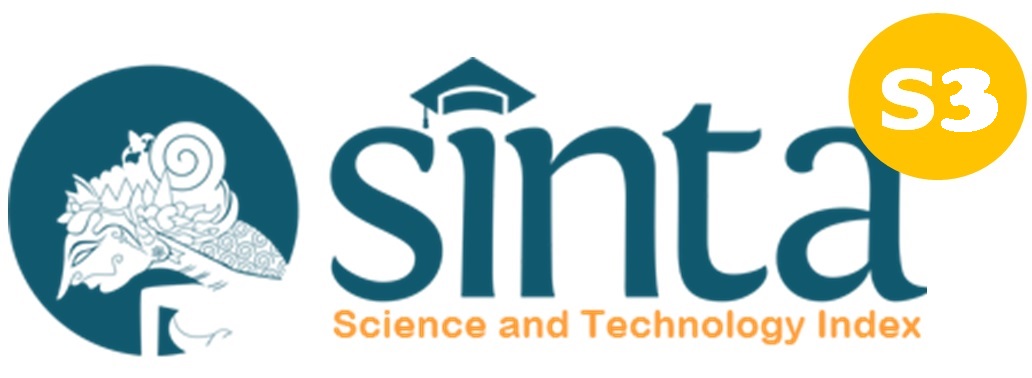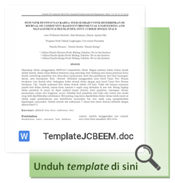Identification of Factors Influencing Gentrification: A Case Study in Solo, Indonesia
DOI:
https://doi.org/10.23969/jcbeem.v8i2.12701Keywords:
Gentrification, Extended Theory of Planned Behaviour, Structural Equation ModellingAbstract
Indonesia is a country with the highest social gap in Asia. This significant social gap drives the phenomenon of gentrification in several cities in Indonesia. Despite the rise in gentrification occurrences, there is very little research concerning the factors contributing to gentrification behaviors in Indonesia. This study investigates the factors contributing to gentrification in the Kerten Area, Solo, Indonesia, and its social effects. Solo area was selected because many regions in Solo are rapidly developing and attracting residential newcomers from various regions in Indonesia. This study delves into the factors influencing residents' intentions and behavior related to gentrification. The study incorporates variables from the extended Theory of Planned Behavior (TPB) associated with human behavior and perception, such as subjective norms, perceived behavioral control, economic factors, social factors, and social awareness. The survey method was employed with 320 respondents, and the analysis utilized Structural Equation Modeling (SEM). The findings indicate that five variables—subjective norms, social awareness, and economic factors—have a substantial effect on gentrification. This research also discovered that attitude and individual concern factors had no significant effect. These results highlight the importance of managing gentrification to minimize social and community impacts.
Downloads
References
Jambeck, J. R., Geyer, R., Wilcox, C., Siegler, T. R., Perryman, M., Andrady, A., Narayan, R., & Law, K. L. (2015). Plastic waste inputs from land into the ocean. Science, 347(6223), 768-771.
Ren, Y., Li, R., Wu, K.-J., & Tseng, M.-L. (2023). Discovering the systematic interlinkages among the gentrification, supply chain, industry 4.0, and technology transfer: A bibliometric analysis. Cleaner and Responsible Consumption, 9, 100123. https://doi.org/10.1016/j.clrc.2023.100123
Danardono, D., Putra, E. B., Haryono, E., & Nurjani, E. (2022). Speleoclimate monitoring to assess cave tourism capacity in Gelatik Cave, Gunungsewu Geopark, Indonesia. Forum Geografi, 31(2), 181-194.
Domenech, T., & Bahn-Walkowiak, B. (2019). Transition towards a resource-efficient gentrification in Europe: Policy lessons from the EU and the member states. Ecological Economics, 155, 7-19. https://doi.org/10.1016/j.ecolecon.2018.03.015
Surya, B., Syafri, S., Sahban, H., & Sakti, H. H. (2020). Natural resource conservation based on community economic empowerment: Perspectives on watershed management and slum settlements in Makassar City, South Sulawesi, Indonesia. Land, 9(4), 104. https://doi.org/10.3390/land9040104
Christopher, M. (2000). The agile supply chain: Competing in volatile markets. Industrial Marketing Management, 29(1), 37-44. https://doi.org/10.1016/S0019-8501(99)00110-8
Szalavetz, A. (2019). Industry 4.0 and capability development in manufacturing subsidiaries. Technological Forecasting and Social Change, 145, 384-395. https://doi.org/10.1016/j.techfore.2019.04.022
Hettich, E., & Kreutzer, M. (2021). Strategy formation across organizational boundaries: An interorganizational process model. British Journal of Management, 32(1), 147-199. https://doi.org/10.1111/1467-8551.12370
Merli, R., Preziosi, M., & Acampora, A. (2018). How do scholars approach the gentrification? A systematic literature review. Journal of Cleaner Production, 178, 703-722. https://doi.org/10.1016/j.jclepro.2017.12.162
Garcia-Muina, F. E., Gonzalez-Sanchez, R., Ferrari, A. M., & Settembre-Blundo, D. (2018). The paradigms of industry 4.0 and gentrification as enabling drivers for the competitiveness of businesses and territories: The case of an Italian ceramic tiles manufacturing company. Social Sciences, 7(12), 255. https://doi.org/10.3390/socsci7120255
Miftahorrozi, M., Khan, S., & Bhatti, M. I. (2022). Waste bank-socio-economic empowerment nexus in Indonesia: The stance of Maqasid Al-Shari'ah. Journal of Cleaner Production, 384, 135468. https://doi.org/10.1016/j.jclepro.2022.135468
Bagastyo, A. Y., Anggrainy, A. D., & Liang, M. S. (2022). Assessment of attitude and participation level among the households and local merchants toward single-use plastic waste management: A case study in Balikpapan Municipality, Indonesia. Case Studies in Chemical and Environmental Engineering, 7, 100361. https://doi.org/10.1016/j.cscee.2022.100361
Satriyono, R. D. A. P., & Ramadani, D. S. (2023). Residential’s household intention to utilize their food: A case study in Solo, Indonesia. IOP Conference Series: Earth and Environmental Science, 1256(1), 012003. https://doi.org/10.1088/1755-1315/1256/1/012003
Hellmich, F., Loper, M. F., & Görel, G. (2019). The role of primary school teachers' attitudes and self-efficacy beliefs for everyday practices in inclusive classrooms: A study on the verification of the ‘theory of planned behaviour’. Journal of Research in Special Educational Needs, 19(1), 36-48. https://doi.org/10.1111/1471-3802.12419
Zhang, B., Yang, S., & Bi, J. (2010). Enterprises’ willingness to adopt/develop cleaner production technologies: An empirical study in Changshu, China. Journal of Cleaner Production, 40, 62-70. https://doi.org/10.1016/j.jclepro.2012.08.022
Gumasing, M. J. J., Prasetyo, Y. T., Ong, A. K. S., & Nadlifatin, R. (2021). Determination of factors affecting the response efficacy of Filipinos under Typhoon Conson: An extended protection motivation theory approach. International Journal of Disaster Risk Reduction, 70, 102759. https://doi.org/10.1016/j.ijdrr.2021.102759
Hadibasyir, H. Z., Rijal, S. S., & Sari, D. (2020). Comparison of land surface temperature during and before the emergence of Covid-19 using MODIS imagery in Wuhan City, China. Forum Geografi, 34(1), 1-15. https://doi.org/10.23917/forgeo.v34i1.12247
Urakami, J., Qie, N., Kang, X., & Rau, P. L. P. (2020). Cultural adaptation of “kawaii” in short mobile video applications: How the perception of “kawaii” is shaped by the cultural background of the viewer and the gender of the performer. Computers in Human Behavior Reports, 4, 100109. https://doi.org/10.1016/j.chbr.2020.100109
Erdiaw-Kwasie, M. O., Abunyewah, M., Yusif, S., & Erdiaw-Kwasie, A. (2022). Does gentrification knowledge matter in sustainable service provision? A moderation analysis. Journal of Cleaner Production, 383, 135429. https://doi.org/10.1016/j.jclepro.2022.135429
Nittono, H. (2016). The two-layer model of kawaii: A behavioral science framework for understanding kawaii and cuteness. East Asian Journal of Popular Culture, 2(1), 1-14. https://doi.org/10.1386/eapc.2.1.1_1
Singh, M. P., Chakraborty, A., & Roy, M. (2018). Developing an extended theory of planned behavior model to explore gentrification readiness in manufacturing MSMEs, India. Resources, Conservation and Recycling, 139, 427-435. https://doi.org/10.1016/j.resconrec.2018.08.017
Chakraborty, A., Singh, M. P., & Roy, M. (2018). A study of goal frames shaping pro-environmental behaviour in university students. International Journal of Sustainability in Higher Education, 19(2), 287-309. https://doi.org/10.1108/IJSHE-08-2017-0121
Satriyono, R. D. A. P., Pebrianti, D., & Sakti, A. S. A. (2023). Residential’s household intention to utilize their food: A case study in Solo, Indonesia. IOP Conference Series: Earth and Environmental Science, 1256(1), 012003. https://doi.org/10.1088/1755-1315/1256/1/012003
Ferdinand, A. (2005). Structural Equation Modeling dalam Penelitian Manajemen. Badan Penerbit Universitas Diponegoro.
Bagozzi, R., & Yi, Y. (1988). On the evaluation of structural equation models. Journal of the Academy of Marketing Sciences, 16(1), 74-94. https://doi.org/10.1007/BF02723327
Bentler, P. M., & Bonett, D. G. (1980). Significance tests and goodness of fit in the analysis of covariance structures. Psychological Bulletin, 88(3), 588-606. https://doi.org/10.1037/0033-2909.88.3.588.














